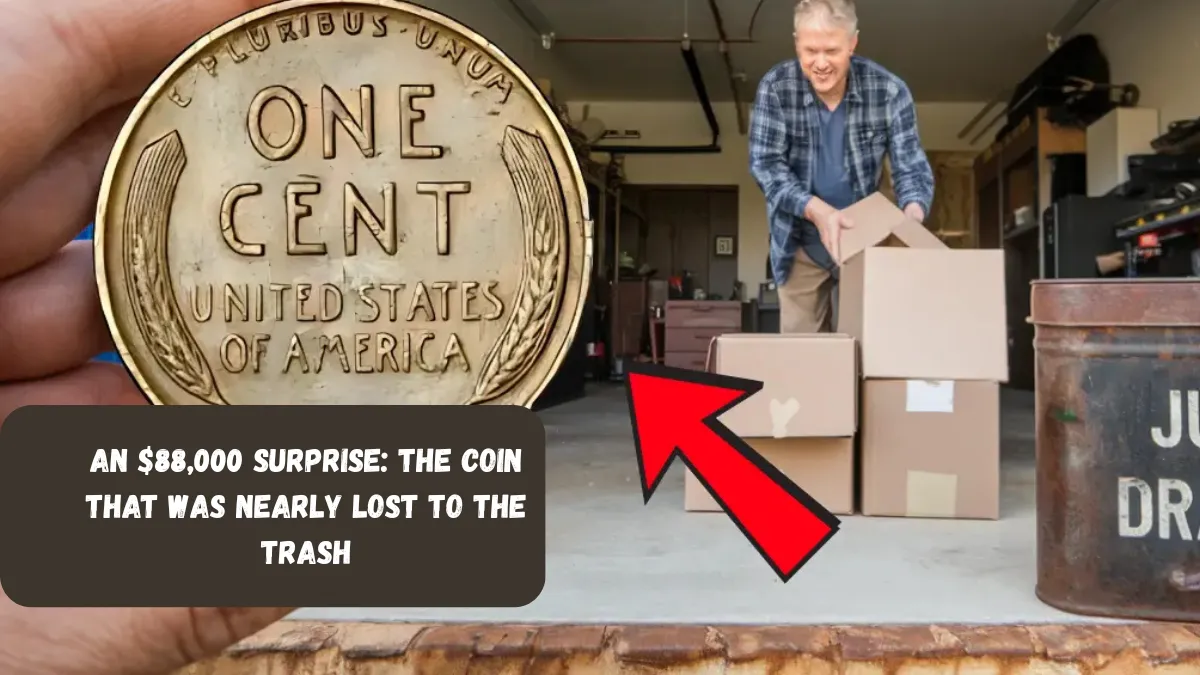A Fortunate Find in the Unlikeliest Place
In a twist of fate that could have easily cost them a small fortune, a family in Oregon stumbled upon a coin worth $88,000 while cleaning out their garage. As they sifted through decades-old boxes filled with forgotten relics, they uncovered a rusted metal tin marked “junk drawer.” Inside was a jumbled mix of items—old buttons, screws, and what looked like a dirty, worn penny.
Ready to discard it without a second glance, they paused just long enough to notice a strange silver-like shimmer on the coin’s surface. The coin, although appearing ordinary at first glance, bore a date that made them hesitate—1943. That moment of curiosity turned into a revelation. Instead of a common penny, they were holding one of the rarest and most valuable coins in U.S. history: a 1943-S Lincoln Steel Penny that had been mistakenly struck on a bronze planchet.
Why This Coin Is So Valuable
The immense value of this penny lies in its historical and minting anomaly. During World War II, the U.S. government prioritized copper for wartime production, particularly for ammunition. To conserve this critical material, the U.S. Mint began producing pennies in 1943 using steel coated in zinc. However, due to a rare minting error, a small number of 1943 pennies were mistakenly struck on leftover bronze planchets from 1942. These error coins were not discovered until years later and are now considered numismatic treasures.
Only a handful of these bronze pennies are known to exist, making them extremely rare. Their uniqueness, combined with their historical context tied to the wartime economy, makes them highly desirable to collectors. At auctions, such coins have commanded prices well into the six-figure range, and their market value continues to rise as more collectors seek these rare pieces of American history.
From Trash to Treasure: A Life-Changing Discovery
Realizing the coin might be valuable, the family wisely contacted a professional numismatist for verification. After examining the coin, the expert confirmed it was indeed a 1943-S bronze planchet penny—an exceedingly rare and sought-after mint error. The coin was submitted to a leading auction house, where it immediately attracted significant attention. As news spread within the collector community, bidding intensified rapidly. Numismatists from across the nation competed for the chance to add the coin to their collections.
Eventually, the coin sold for an astounding $88,000. The family, initially on the verge of throwing it away, found themselves stunned and overjoyed. One member remarked, “We were absolutely stunned. It just looked like a regular old coin, something we’ve probably seen hundreds of times over the years. We had no idea we were holding something this valuable.” Their story has since become a symbol of how attention to detail can lead to unexpected fortune.
A Wake-Up Call for Coin Collectors — and the Curious
This extraordinary incident serves as a valuable reminder that hidden treasures can be lurking in the most overlooked corners of our homes. Rare coins, especially those resulting from minting errors or produced during historically significant years, can be mistaken for everyday change. Coins minted during World War II, transitional years like 1982, or those featuring visible errors such as doubled dies or incorrect metals, can carry substantial value. Experts urge the public to examine their pocket change and old coin jars more closely.
Dates like 1943, 1955, 1969, 1970, and 1982 are particularly worth reviewing, especially if the coin looks unusual in color, design, or weight. The Oregon family’s story highlights how just a few seconds of curiosity and inspection can uncover something extraordinary. For collectors, casual hobbyists, or anyone with an old coin stash, this tale offers both inspiration and a compelling reason to take a closer look.
Bottom Line
The story of the nearly discarded $88,000 penny is more than just a lucky break—it’s a compelling example of how valuable items can be hiding in plain sight. What began as a routine cleaning session turned into a life-changing discovery, thanks to a single glance at a suspicious-looking coin. While their fortune was partly due to chance, it also illustrates the importance of being observant and curious about even the most mundane-looking possessions.
As interest in coin collecting continues to grow, this story resonates with seasoned numismatists and novices alike. It invites us all to reconsider what treasures might be gathering dust in our own homes. So next time you spot a strange coin in your change jar or tucked away in a drawer, take a moment to examine it. You just might be holding a piece of history—and a potential fortune.
FAQs
Q: What makes the 1943 bronze penny so rare?
A: The 1943 bronze penny is rare because it was created by mistake. That year, the U.S. Mint switched to steel pennies to save copper for the war effort. However, a few leftover bronze blanks were used by accident, creating these ultra-rare coins.
Q: How can I tell if I have a valuable coin?
A: Look for unusual features like incorrect metal color, doubled images, or odd weights. Coins from key years like 1943, 1955, 1969, and 1982 should be examined carefully. Professional appraisal is recommended if you suspect your coin is rare.
Q: What should I do if I think I found a rare coin?
A: Don’t clean the coin, as this can reduce its value. Place it in a protective holder and consult a professional coin appraiser or numismatist to determine authenticity and potential value.
Q: Can regular pocket change be valuable?
A: Yes, valuable coins can sometimes be found in everyday change, especially mint errors or coins from transitional minting years. It’s rare, but not impossible—stories like this prove it can happen.
